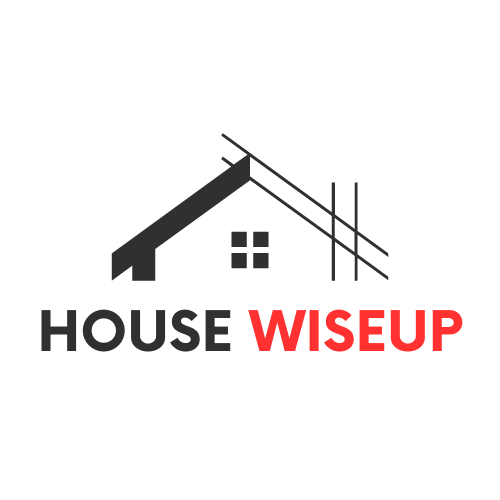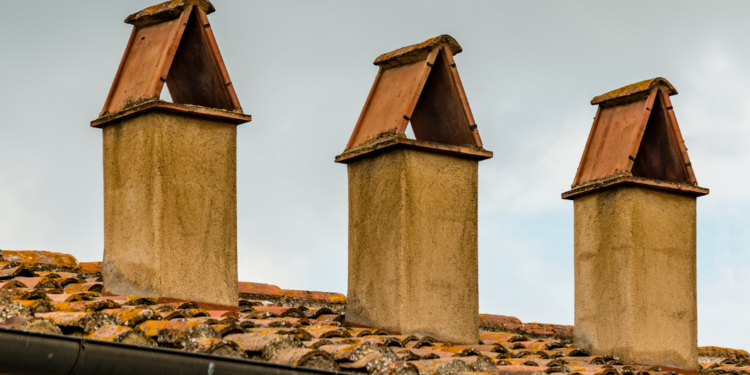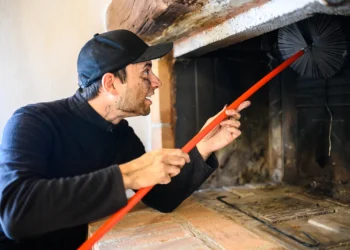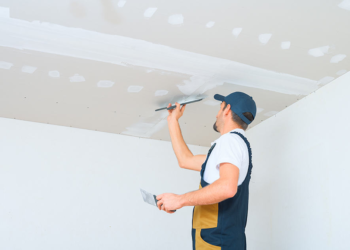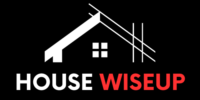There’s nothing quite like sitting by a cozy fireplace on a cold day—it adds a special warmth and charm to your home. But if you don’t take care of your chimney, it can lead to serious problems like fires or water damage, which can put your family and home in danger. Chimney maintenance is all about keeping your chimney in good shape so it works properly and safely. Regular cleaning helps prevent build-up that can block airflow or even cause dangerous situations like fires. By staying on top of chimney care, you ensure it runs smoothly, keeping your home safe and cozy.
In this easy-to-follow guide, we’ll talk about the common issues chimneys can have, why regular check-ups and maintenance are so important, and some simple tips to keep your fireplace safe and enjoyable all year round.
Table of Contents
What is a Chimney?
A chimney is a structure that helps carry smoke away from a fireplace or furnace while also bringing air to the fire. Before the 12th century in Western Europe, fires were usually in the middle of a room, so chimneys weren’t common. Later, as building techniques improved, people started placing fireplaces along walls with chimneys to vent the smoke. Over time, chimneys became more decorative, especially during the 15th and 16th centuries.
A basic chimney has three main parts: the throat (where the smoke starts rising), the smoke chamber (which slows and collects smoke), and the flue (the long passage that carries the smoke out). These parts work together to keep smoke flowing smoothly out of the house while preventing it from coming back in.
Regular Chimney Problems and Safety Hazards
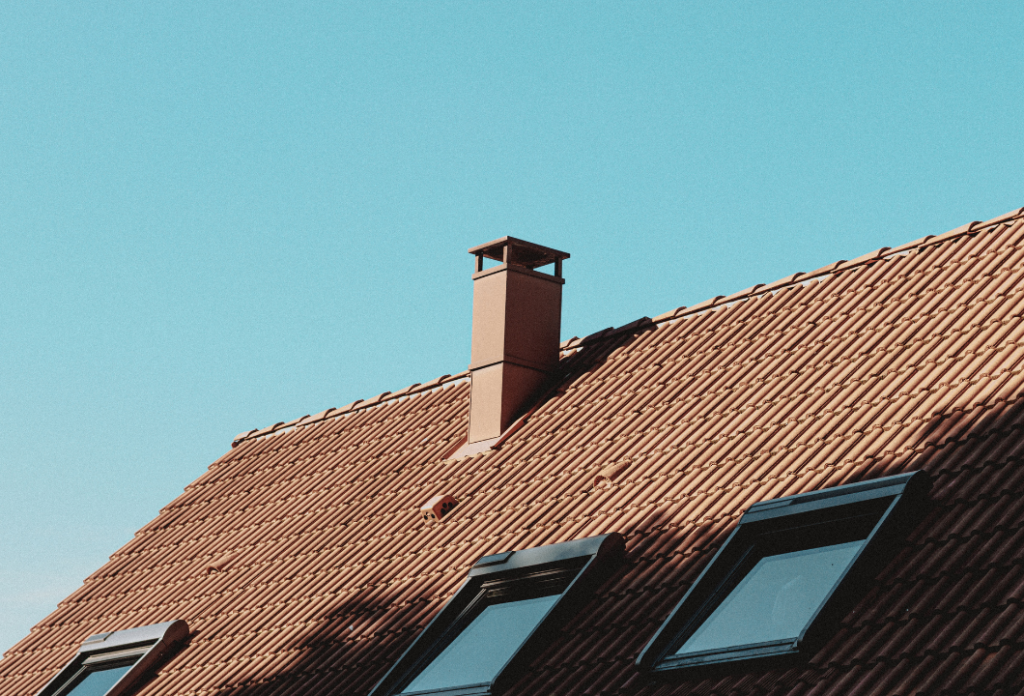
Whether you have a metal or brick chimney with a gas or wood-burning fireplace, regular maintenance and inspections by certified professionals are key to keeping things safe. A common sign that your chimney needs attention is trouble starting or keeping a fire going, or if the heat isn’t spreading evenly. This usually happens when soot and creosote build up in the chimney, blocking airflow and preventing the damper from working properly.
Chimney fires are a real concern and are often caused by too much soot and creosote buildup, which happens when chimneys aren’t cleaned enough. To avoid this, make sure to clean out any blockages (you can do it yourself or call a local chimney sweep) and schedule a yearly inspection by a chimney expert. If you use your fireplace a lot, more frequent checks might be necessary. It’s best to avoid using cleaning products or specialty logs without talking to an experienced contractor first.
Structural issues, like crumbling brick, leaning chimneys, or cracked flue liners, can also happen over time. These problems weaken the chimney and can lead to dangerous situations, like carbon monoxide leaks or damage to your home.
Chimney maintenance tips
To maintain a safe and efficient chimney, follow these essential best practices and chimney maintenance tips:
1 Consistent Professional Maintenance and Cleaning
Hire a qualified chimney professional to inspect and clean your chimney regularly. They can spot any issues, suggest necessary repairs, and do a thorough cleaning to get rid of any buildup.
2. Safety First
When you’re up on the roof checking your chimney, make sure you have the right safety gear to avoid accidents. It’s always better to be safe than sorry!
3. Avoiding Chimney Fires
To lower the chance of a chimney fire, regular cleaning and inspections are key. How often you clean it depends on how much you use it and what kind of fuel you burn. Hardwoods like oak burn cleaner and create less buildup than softwoods.
4. Signs You Need a Chimney Sweep
If you notice smoke sneaking back into your home while the fireplace is on, it could mean it’s time for an inspection and a professional chimney sweep.
5. Buying a New Home or After an Earthquake
When buying a new house, don’t forget to get the chimney checked. And if your home has been through an earthquake, get a chimney inspection to make sure there’s no hidden damage.
6. Follow Building Codes
Make sure there’s enough space between your fireplace and anything that could catch fire. Building codes also have rules for the size of the hearth and mantel. And, always keep a fire extinguisher nearby and make sure it’s in good working order.
What Does Professional Chimney Cleaning Include?
If you’ve never had your chimney cleaned by a pro before, you might be wondering what the process is like. Here’s a simple guide to help you know what to expect when you book a chimney cleaning.
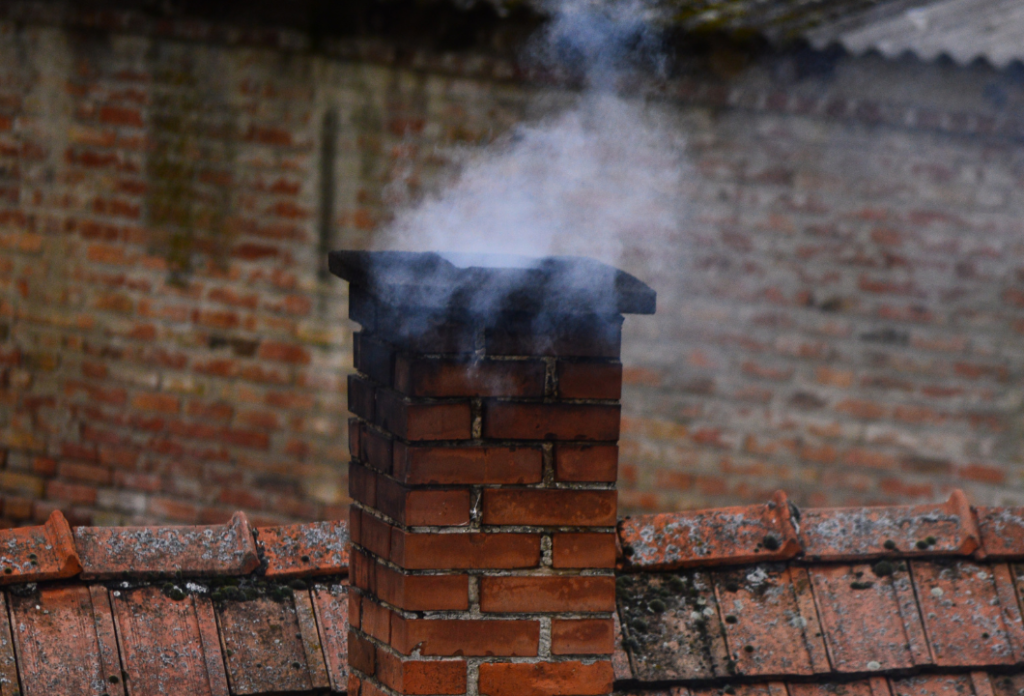
Booking Your Appointment
Once you’ve picked a chimney sweep and set your appointment, they might call you before the day to confirm the details and give you a few instructions. This might include what time they’ll arrive and how to get ready for their visit.
Your chimney expert will talk with you to figure out exactly what you need. Maybe it’s just a basic cleaning, or maybe they’ll recommend a full inspection to check for any potential damage.
Preparing for the Cleaning
Make sure you don’t light the fireplace for at least 24 hours before the cleaning. It’ll also help to clear any furniture or decorations around the fireplace so the cleaner can reach it easily. If you want, you can cover your furniture to keep it safe from dust and debris. Don’t worry—chimney cleaners always try to leave your space as clean as they found it!
Meeting the Expert
When the chimney expert arrives, they might come alone or with a partner. They’ll have all the tools they need, like special vacuums, brushes, cameras, and cleaning products. The technician will be dressed in gear to protect themselves from ash and soot, like goggles, gloves, and a mask. It’s a good idea to check that they have the right certifications, like CSIA (Chimney Safety Institute of America) or NFPA (National Fire Protection Association), so you know they’re qualified.
Cleaning and Inspecting the Chimney
The chimney pro will first inspect the area and cover the floor with plastic or a drop cloth to protect your space. Then, they’ll use a big, metal-bristled brush to clean the inside of your chimney. They may start from the roof or from the flue, depending on the setup.
They’ll also clean the smoke chamber, firebox, and smoke shelf by hand. While doing this, they’ll check for any animals, like birds or bats, that might have gotten into your chimney. If they find any, they’ll safely remove them and relocate them.
Your technician will clean up any mess made during the job, so you won’t have to worry about extra cleaning.
Chimney Report and Next Steps
After cleaning, the chimney expert will give you a report on how things look. If they find any issues, they might show you with a camera and suggest solutions. You can also set up your next cleaning or schedule any needed repairs at this point.
Chimney maintenance cost
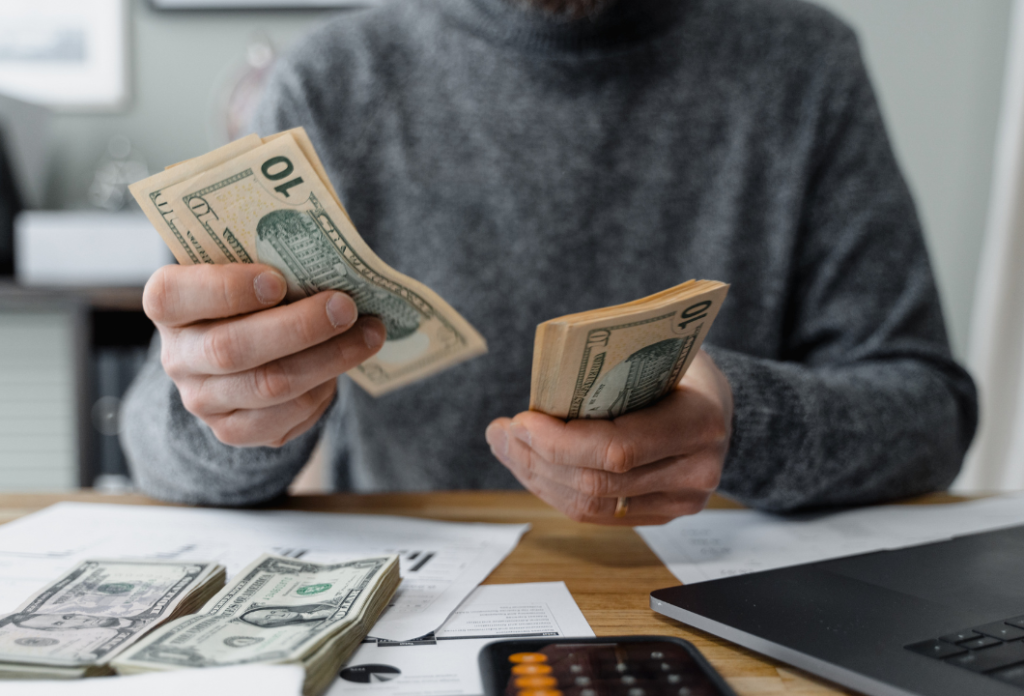
The cost of maintaining a chimney can vary based on its type, the services needed, and its current condition.
Cleaning Costs:
- Wall-mounted chimney: Rs 500–1,500
- Island chimney: Rs 1,000–2,000
- Corner chimney: Rs 1,500–2,500
- Basic cleaning for a Sun Flame electric chimney: Rs 400–700
- Deep cleaning for a Sun Flame electric chimney: Rs 800–1,200
Repair Costs:
- Repairing a Sun Flame electric chimney: Rs 300–600, depending on the issue.
Installation Costs:
- Installing a wall-mounted chimney: Rs 850–1,500
Annual Maintenance:
- Annual maintenance contract for a Kutchina chimney: Starting from Rs 1,900
Blockage Removal:
- Blockages caused by grease, dust, or debris can affect airflow, but removing them can restore proper function.
You can also help maintain your chimney by cleaning it regularly to avoid bigger issues down the road!
Conclusion
Fireplaces and wood stoves bring warmth and a touch of tradition to your home. But if you ignore their upkeep, it can lead to serious safety risks. By making regular, professional chimney care a priority, you can keep enjoying the cozy vibes of your fireplace while keeping your family and home safe. Don’t overlook the need for maintenance—keeping your chimney in good shape ensures your home stays a comfortable, worry-free haven.
